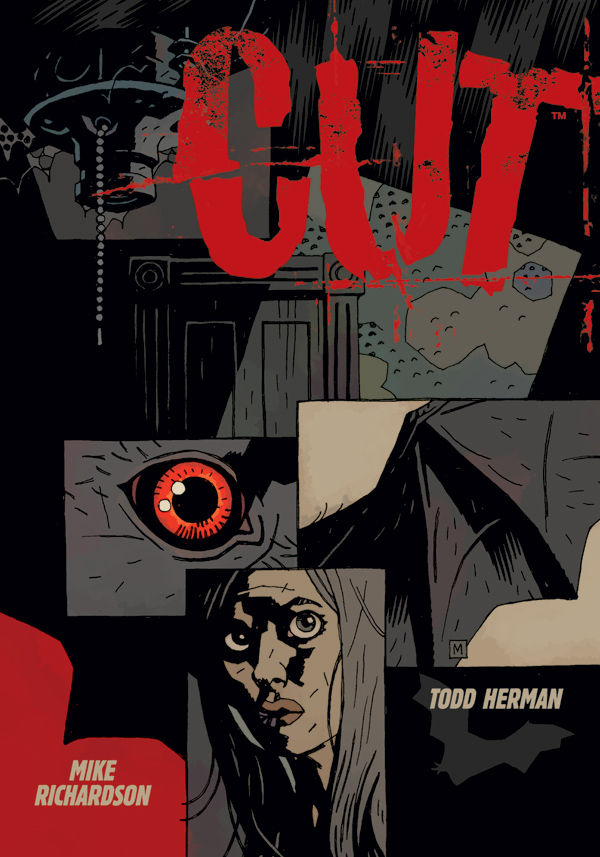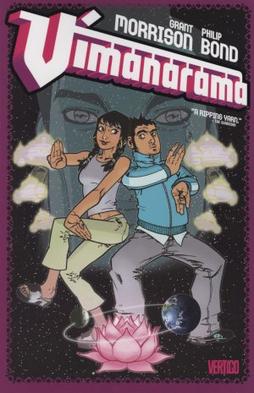Apart from reading novels and short stories, I get through a lot of graphic novels and comic books too. In fact, for the last couple of years I may have read more graphic novels and traditional ones since they're less time-consuming and (generally) less taxing. Digesting the information from a picture is instantaneous, whereas it takes real concentration to decode a page and a half of landscape description - one of my pet hates - so when I'm exhausted, on a bus or simply with a screaming baby, I often plump for the graphic novel.
Anyway, here's a list of (what I can remember anyway) of the books I've read in 2010:
Batman: Hush, by Jeph Loeb and Jim Lee. This one's an insanely popular Batman title that ran for a year originally (12 issues). If you ask me, the story's a bit overrated and a lot of it is a big excuse to trot out a series of guest stars as Loeb (sometime writer of TV's
Heroes and producer of
Lost) enjoys playing in the DC toybox a little too much. However, it's still a great read and Jim Lee's artwork is sublime.
Transmetropolitan Volumes 3: Year of the Bastard and
4: The New Scum by Warren Ellis and Darick Robertson.
Transmetropolitan is Warren Ellis's career-defining work of journalism, politics, sci-fi, pill-popping and two-headed cats. It's alternately rude, violent, heart-wrenching and hilarious - a very provocative read.
Catwoman: Dark End of the Street, by Ed Brubaker and Darwyn Cooke. Brubaker is one of the writers responsible for making crime fiction clever and cool again in the world of comics, and Darwyn Cooke's moody artwork suits the scripts perfectly in this revamp of Catwoman for a new era. This volume strips back all the superheroics that you'd expect from a supporting character in a Batman book and sends Selina Kyle off in a new direction of gritty crime and, of course, catburgling. A great place to start reading the character!
Parker: The Hunter, Darwyn Cooke. This is the only official adaptation of Richard Stark's
Parker series of crime novels. The story's well-known and has been adapted into various films (notably Mel Gibson's
Payback). Parker is a man with nothing to lose, looking for revenge on the criminals who double-crossed him.
I've mentioned above my appreciation for Darwyn Cooke's unique style of artwork, but it really has to been seen to be believed, so have a look
here,
here and
here. It's moody and not quite black and white - they're shades of blacks, blues and greys to reflect the morality of the characters. I would say this is one for fans of
Sin City, but I don't want to put off readers who found the film/book series's dialogue a bit silly.
Parker is much more believable, albeit terse and film noir to the bone.
One of my pet-hates in comics is the tendency to obscure the artwork with massive amounts of writing in captions and word balloons. Yes, the speech is important, but when you get more white space with letters in it than actual pictures, it slows the pace of the strip right down and starts to ruin the reading experience. (There's always an exception of course, as readers of The Walking Dead will know! More on that in a later post.) So in The Hunter, there are large sections of exposition in captions, but they never threaten the flow of the story. In fact, pages of the book read almost as prose with the artwork being shunted to one side. But again, for some reason, Cooke makes it work.
Similarly, there are parts that this really doesn't feel like a "comic" as such. Something about the lettering and panel arrangements makes it feel like something a lot more original - it's not trapped in the ever popular grid that plagues comic layouts and it's not quite the right format (size-wize) for an American comic. If anything, it feels like a novel with its dust-jacket and hardback.
This is the one graphic novel I would recommend to everyone, including people who don't ordinarily dip into comics or graphic novels. As for me, I'm eagerly looking forward to reading the sequel, The Outfit, that I received for Christmas!
...and I'm going to have to leave this post to be completed later. It's ran on long enough! I'd love to know if anyone's read any of these, and if they have any thoughts, feelings, recommendations. Hopefully soon I'll get to writing about what I'm reading now.









